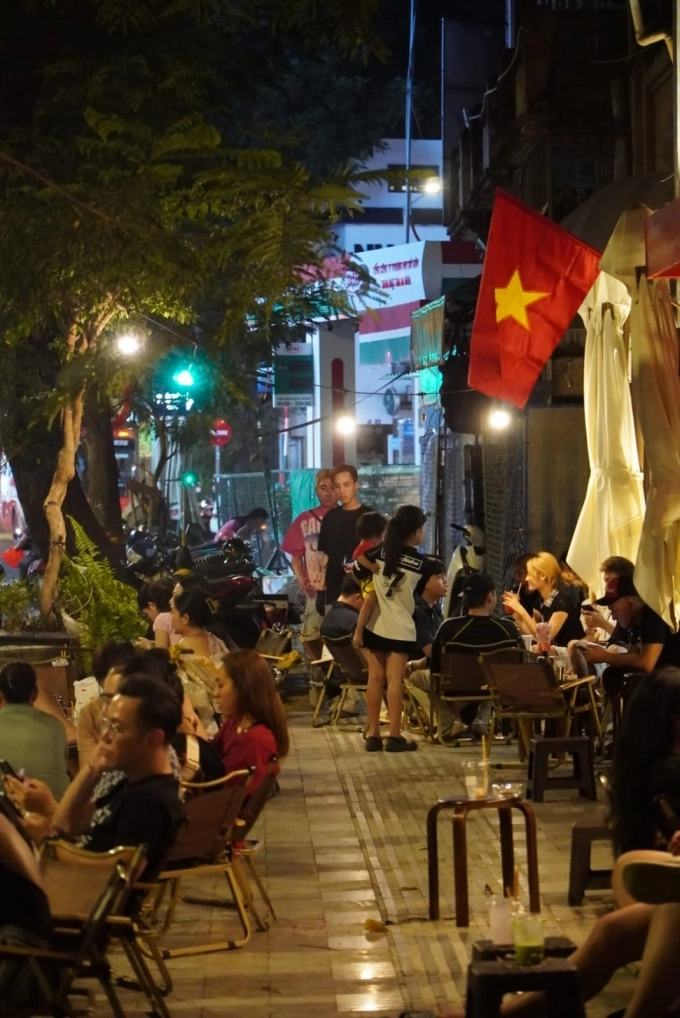5 Southeast Asian destinations named among best choices for slow travel
4 min readThe two top destinations are frequently compared by travelers.
In 2024 Thailand received 35.6 million international visitors, double Vietnam’s 17.6 million.
Tourists say Thailand delivers a better experience but Vietnam captures their hearts with sincerity and warmth.
British traveler Alejandro Campbell drew attention in April with a video comparing the two countries.
In it, he observes that tourism is a pillar of Thailand’s economy, with services designed to maximize traveler convenience.
Thailand’s marketing also makes an impression, branding itself as the “land of smiles,” he says.
In 2019 Thailand earned $60 billion from tourism, according to the World Bank.
It has built a system for international visitors, from English-speaking guides to well-structured tours.
Dutch tourist Nathalie Linden, who visited both countries, also noticed this.
She says Thailand’s tourism had a head start and has branded itself with slogans like “Amazing Thailand.”
Tourists can easily find places that cater to them, with Phuket being a prime example, marketed as a hub for foreign travelers, she points out.
But what has stayed with Linden is the acts of kindness she encountered in Vietnam.
During a trip in the Mekong Delta, her family got separated due to a malfunctioning map app. A local woman noticed her distress and called her husband to help. He gave Linden a ride back to her hotel, waved goodbye with a smile, and expected nothing in return.
“I didn’t even get a chance to say thank you,” she says.
 |
|
In Chau Doc City in Vietnam’s Mekong Delta, a street food vendor poses for a photo with Nathalie Linden’s husband (L) and son (R). Photo courtesy of Nathalie |
Later, when they visited Fansipan in northern Vietnam, it was her husband’s turn to get lost during a hike, and their hotel staff did everything they could to support her.
When she once forgot to collect change, a vendor chased her to return it.
Such sincerity and kindness have left an impression in her heart about Vietnamese.
Linden was captivated by motorbike rides in Sa Pa Town and its terraced rice fields and local culture.
The Mekong Delta’s floating markets, the Cu Chi tunnels and Hanoi’s French colonial architecture all left cultural impressions.
Meanwhile, Thailand delivered vibrant entertainment, from night markets to water festivals in Bangkok, Phuket and Chiang Mai.
Grant Wilson, an Australian who has lived in both countries, shares similar feelings. He prefers staying in homestays in Vietnam, where hosts often invite guests to family meals.
In his video, Campbell recalls a moment in Da Lat City in Vietnam’s Central Highlands when a coffee shop owner invited him for a chat, not to sell anything, but simply to practice English. They talked for about 30 minutes.
“There was no pressure, no awkwardness.”
He finds both countries hospitable, but the styles differ: Thailand’s hospitality felt somewhat scripted, while in Vietnam it felt real.
Campbell loves sitting on plastic stools in Saigon, sipping iced tea and watching life unfold. He says while riding past villages near Da Lat he was greeted with waves from locals. These things make him feel like he is part of the community.
“Thailand is a resort. Vietnam is real life, full of energy.”
 |
|
HCMC’s sidewalks fascinate Alejandro Campbell. Photo courtesy of Alejandro Campbell |
But it is not as if the tourism experience in Vietnam is unblemished for visitors.
Environmental issues are a major concern, for one.
Wilson notes that travelers complain about plastic waste, and Linden is shocked by the water pollution in the Mekong Delta.
Vietnam’s public transport lags behind Thailand’s, according to Wilson.
Limited options and poor infrastructure often cause traffic jams, a downside for international tourists.
The 2024 TomTom Traffic Index listed Hanoi among the world’s 20 most congested cities. In contrast, Bangkok’s BTS Skytrain system moves 1.5 million passengers daily, giving Thailand a clear edge in traffic management.
Visas are another hurdle. Mark Bowyer of Rusty Compass points out that Thailand offers 30-day visa-free access to citizens of 60 countries.
“Complex visa processes discourage spontaneous travel” and weaken Vietnam’s role as a regional air travel hub, he adds.
Vietnam also struggles with uncontrolled coastal development, which affects its scenic appeal.
Besides, like Thailand, its top destinations are suffering overcrowding.
Wilson recalls the discomfort of navigating Hoi An ancient town earlier this year.
 |
|
Grant Wilson poses on the Dragon Bridge in Da Nang City. Photo courtesy of Grant Wilson |
He also points to Vietnam’s limited nightlife for tourists compared to Thailand, with things mostly revolving around bars catering to locals.
But Vietnam is evolving, he says.
He praises Da Nang for embracing international tourism, citing events like its fireworks festival.
Linden says Vietnam’s tourism industry is paying more attention to environmental issues. Some hotels have adopted programs to reduce plastic waste, while the way nature is being conserved in Hoi An and Ninh Binh can help attract travelers seeking meaningful experiences.
While there is admittedly much room for improvement, Vietnam is steadily carving out a special space in the hearts of tourists, critics say.
Many believe it is catching up with Thailand but without losing its charm.



